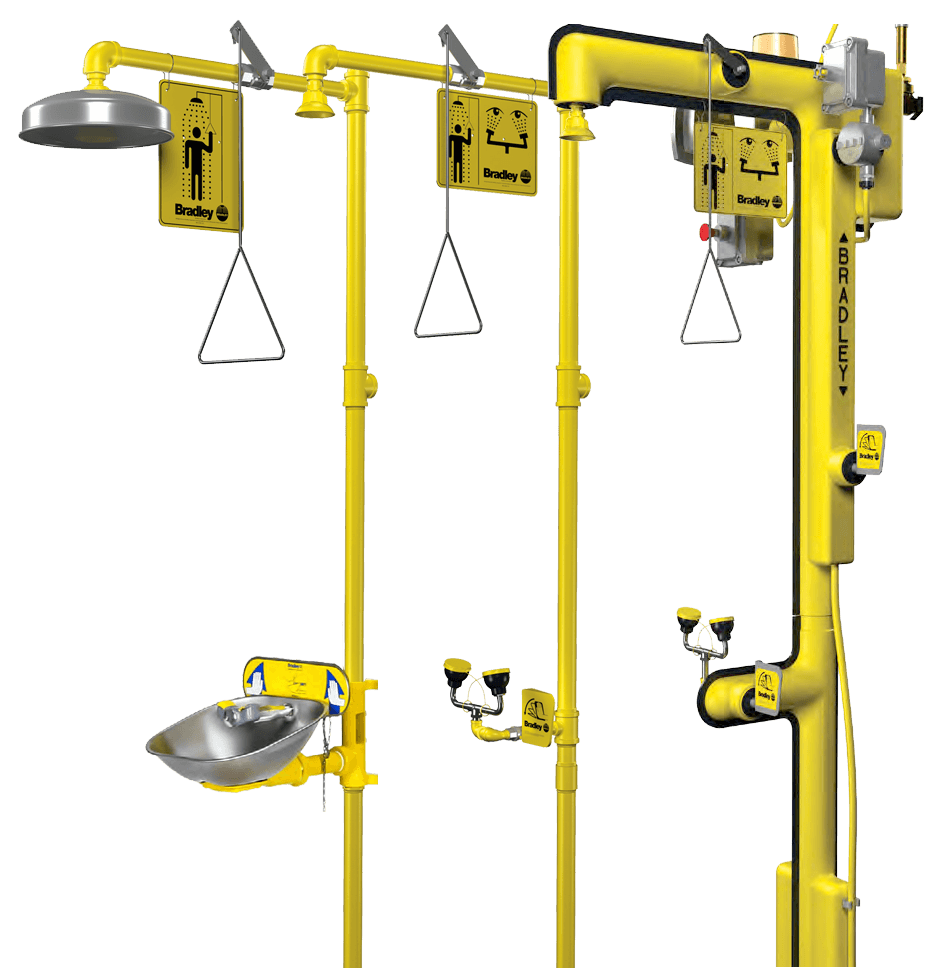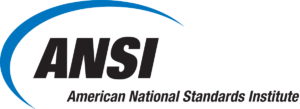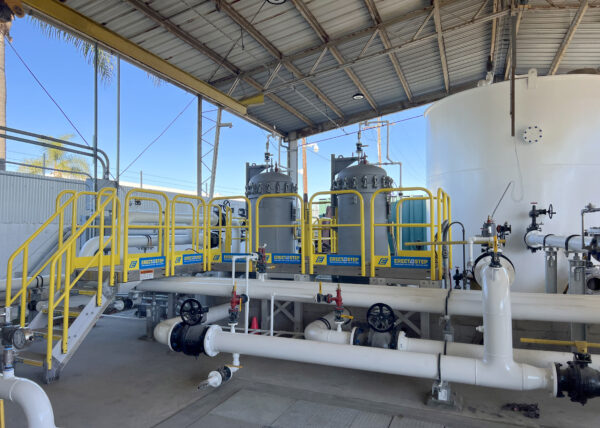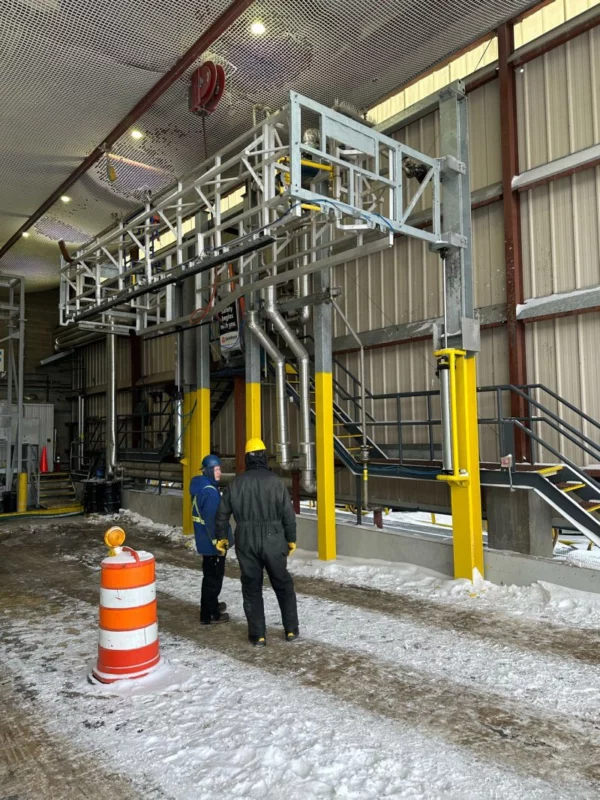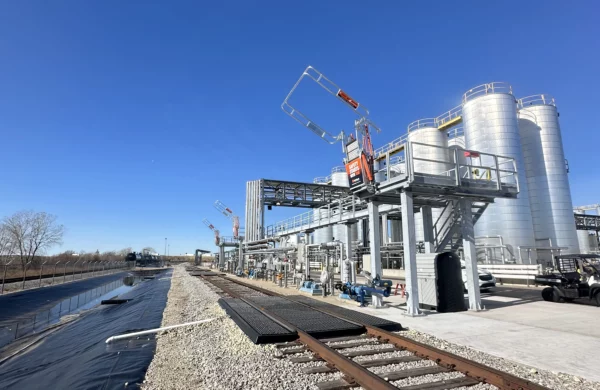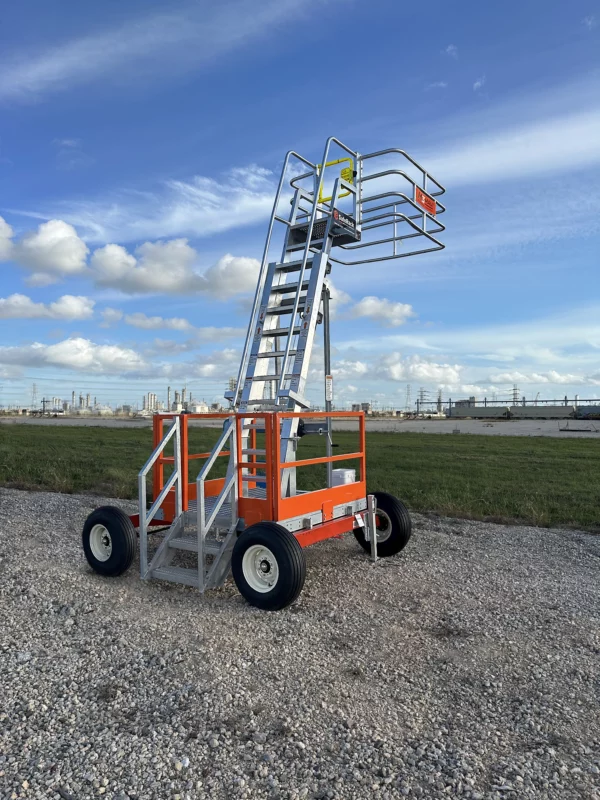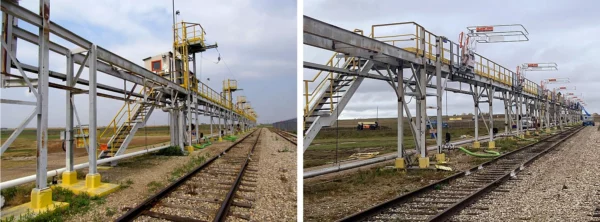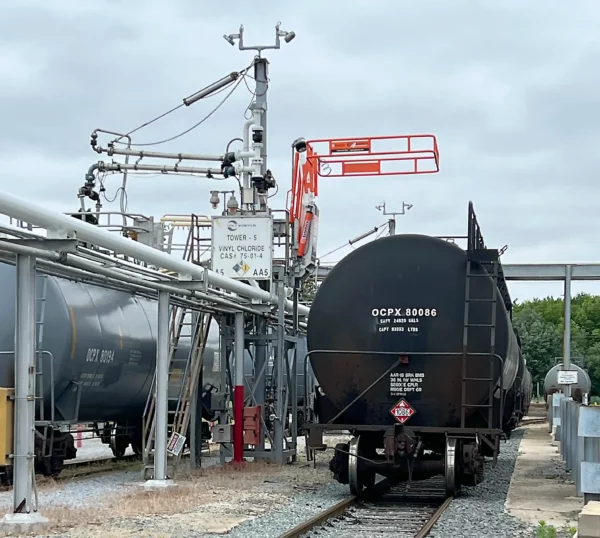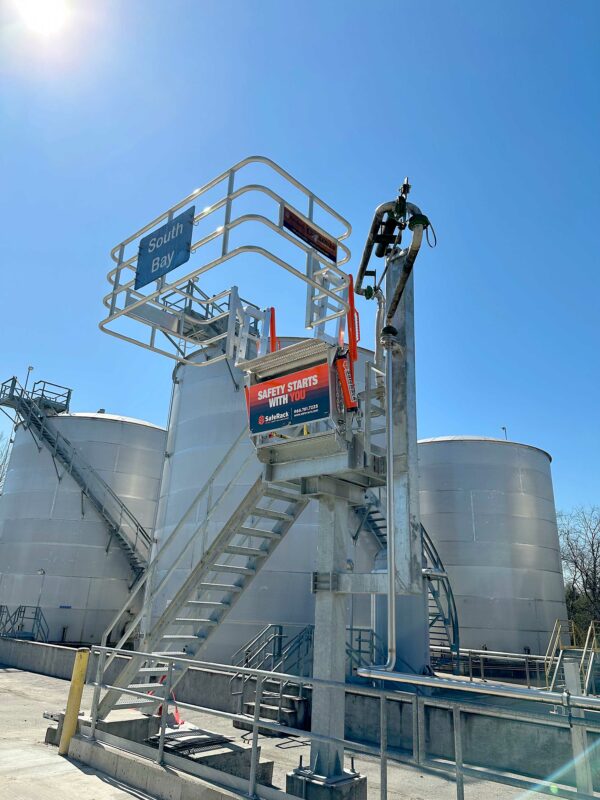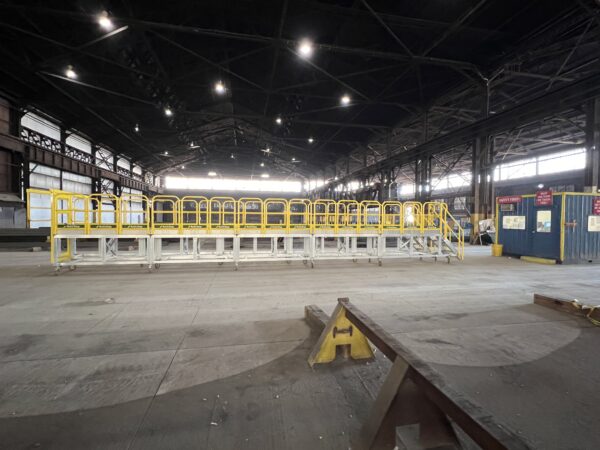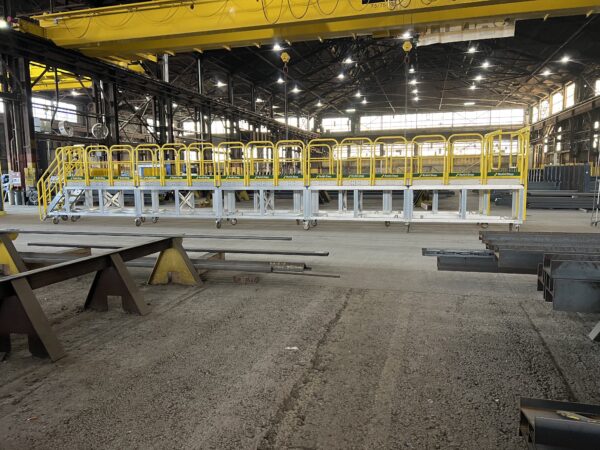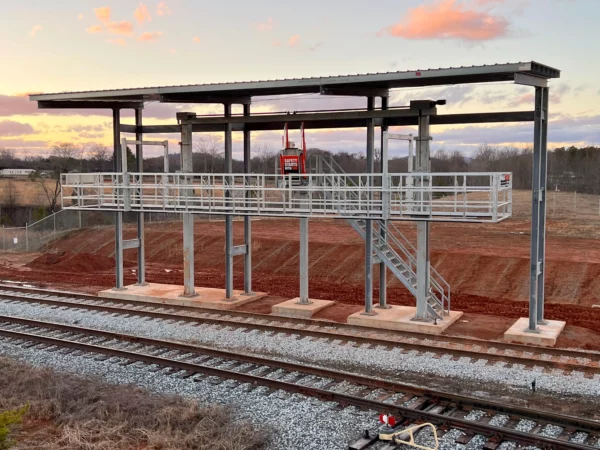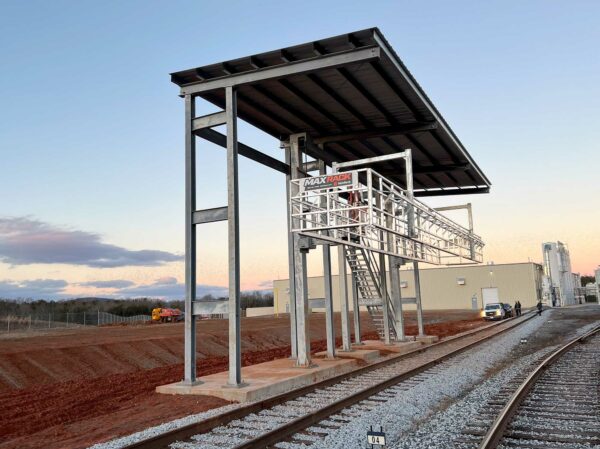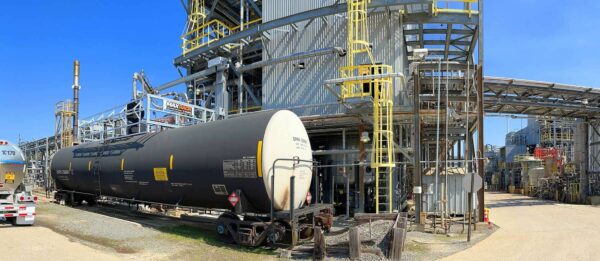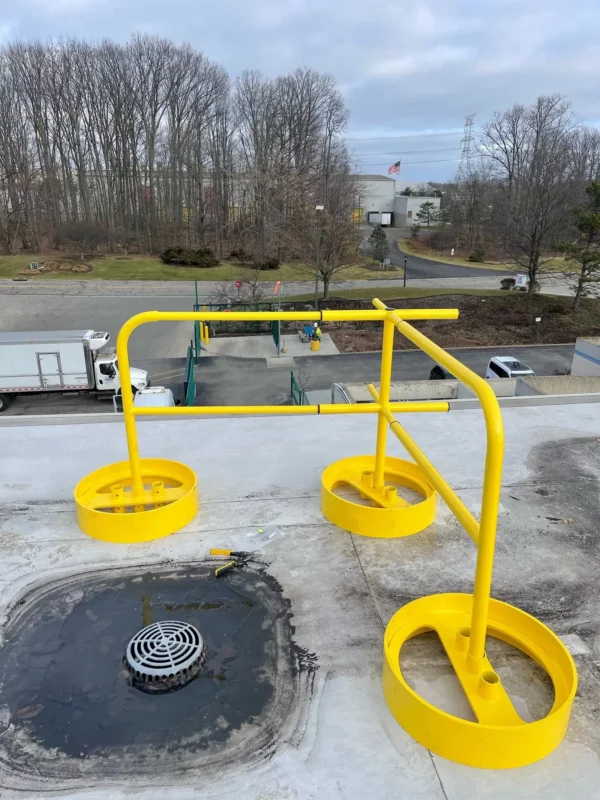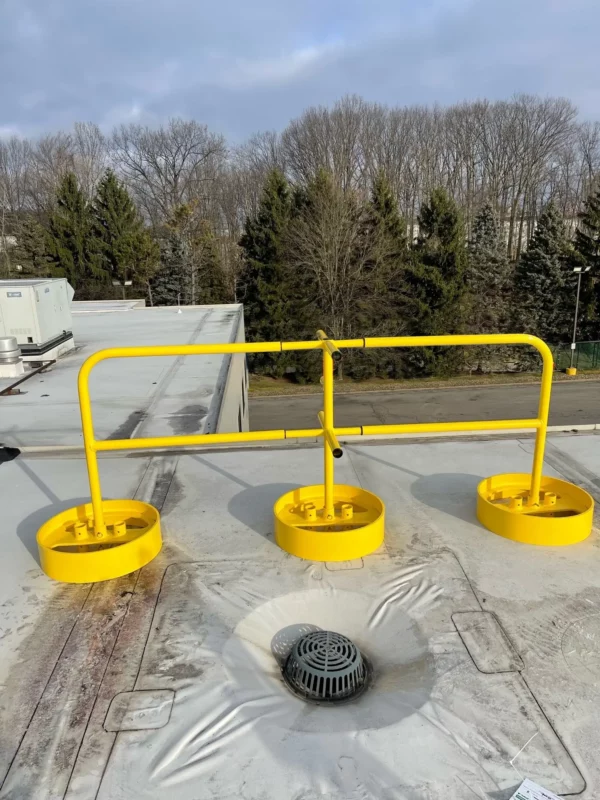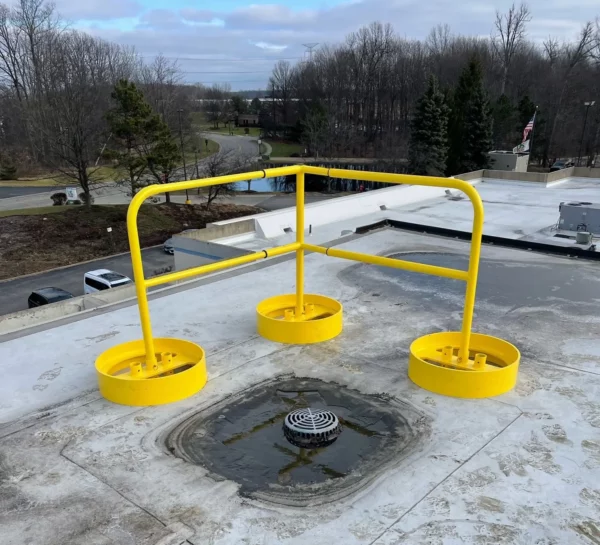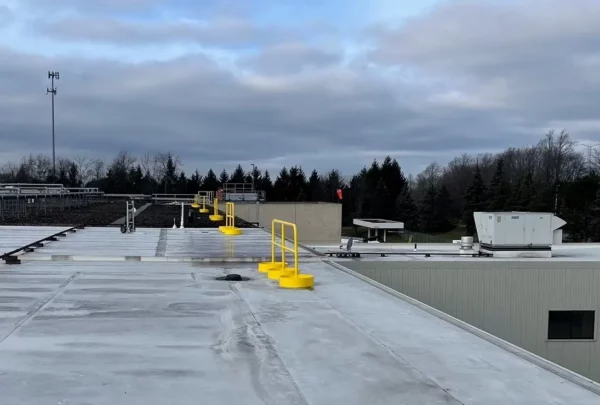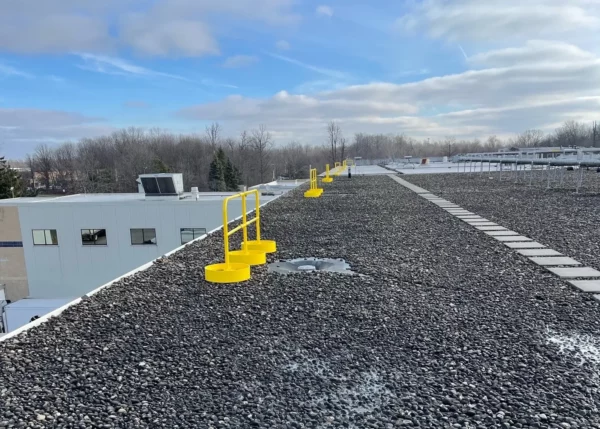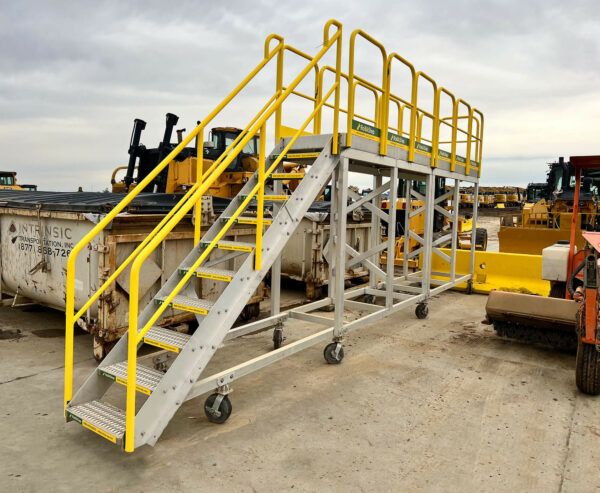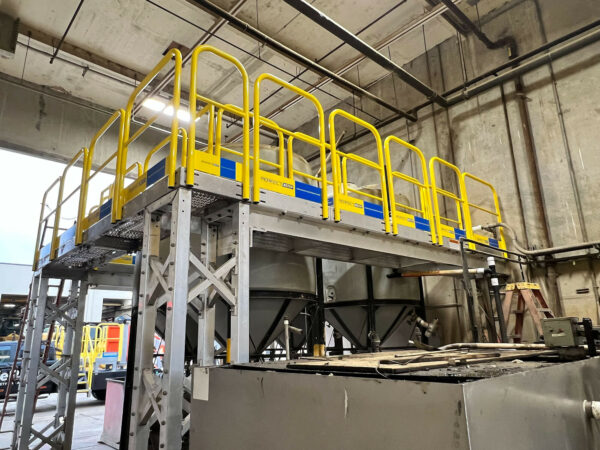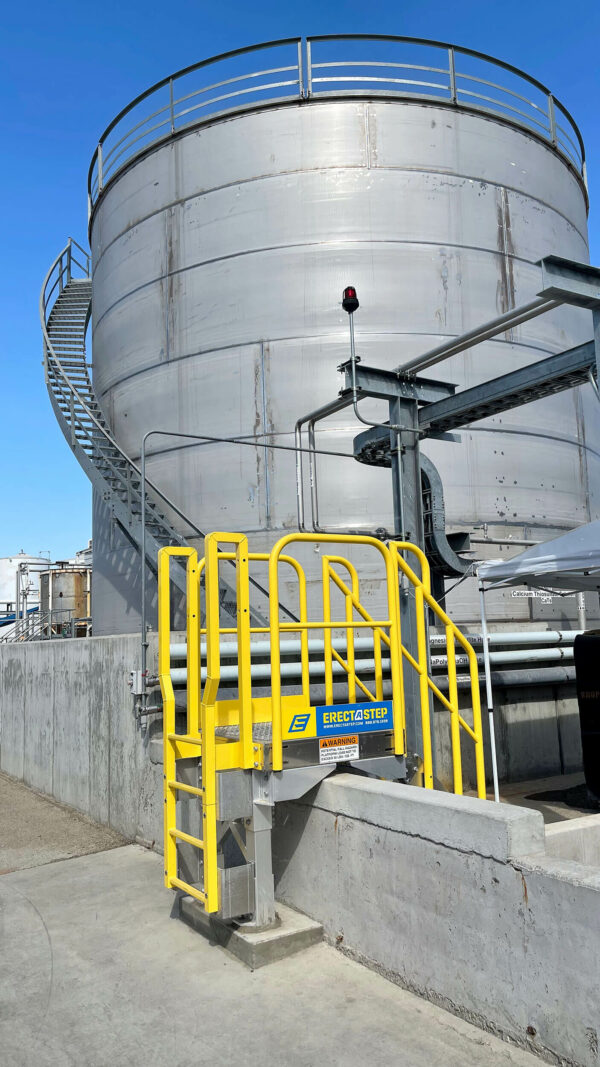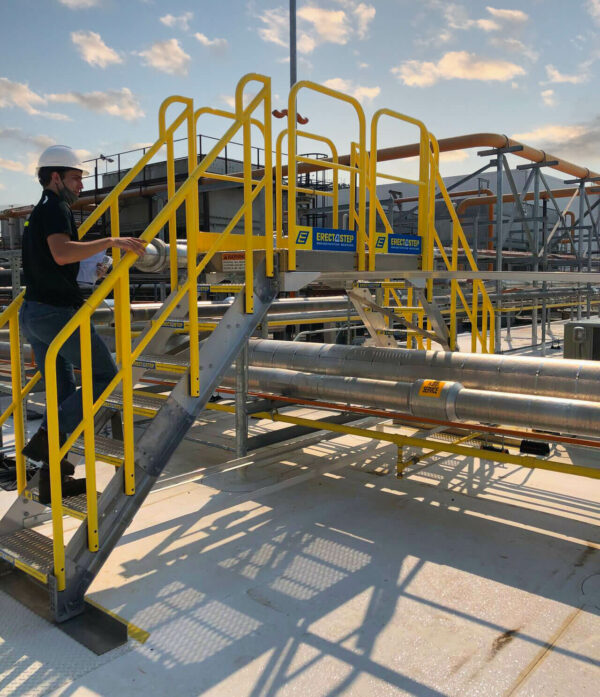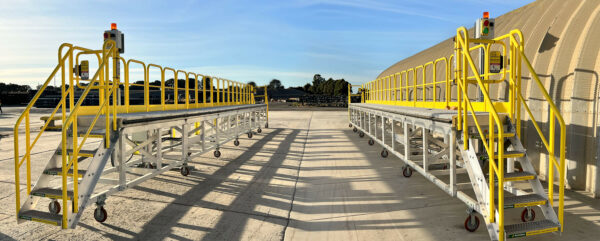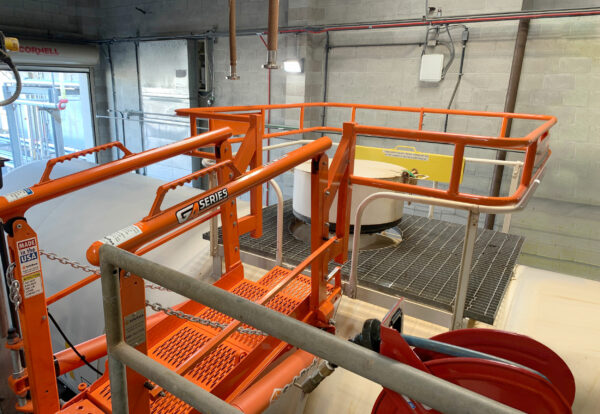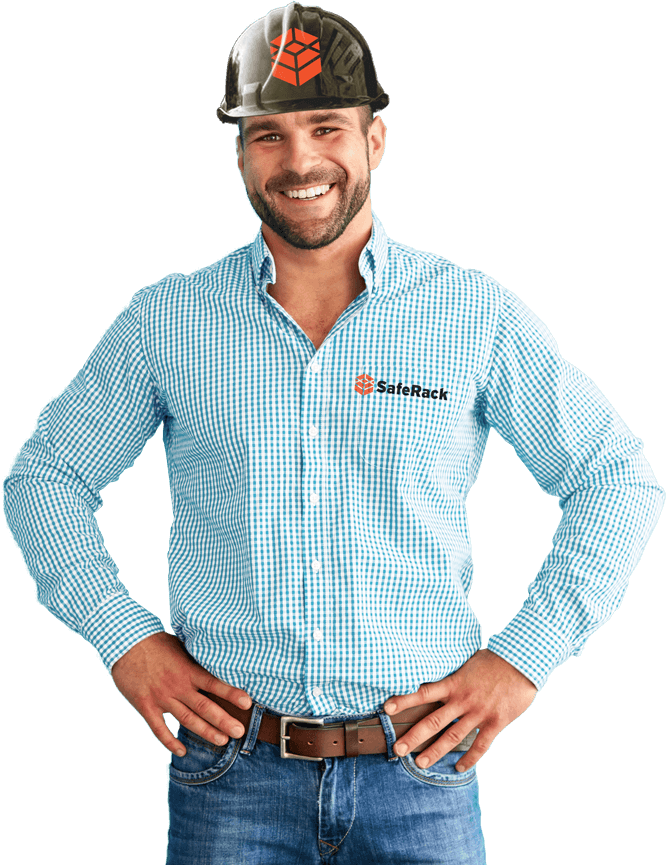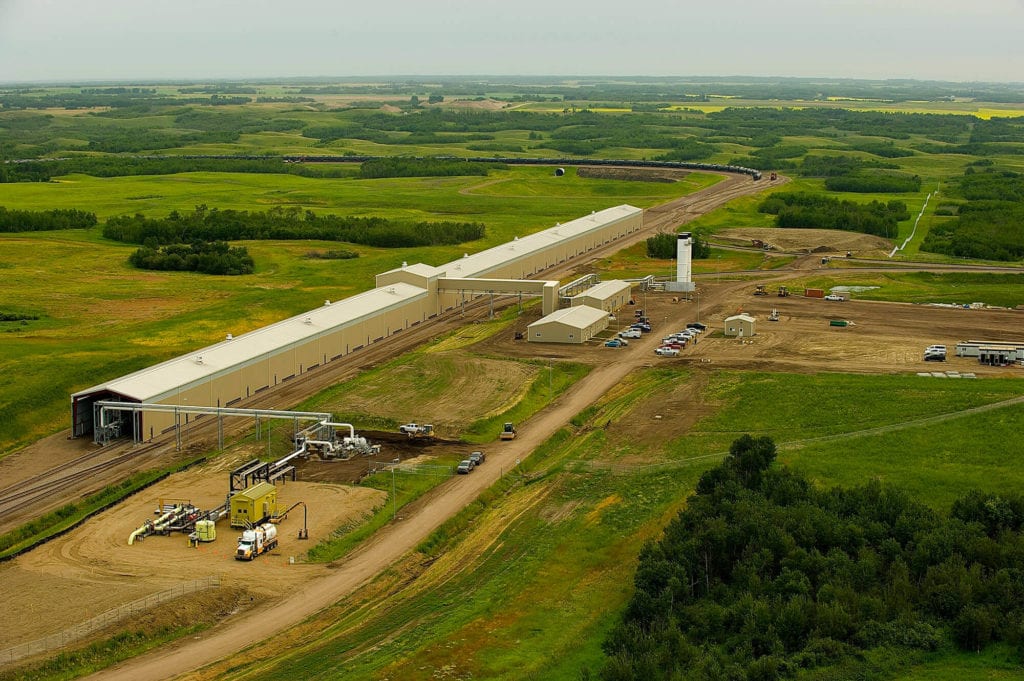Get a quote, configure a custom safety solution or ask a question. We're here to help!
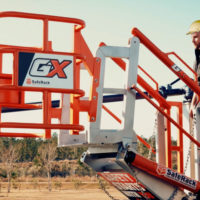
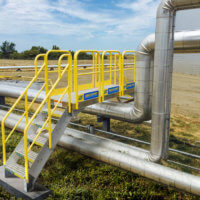
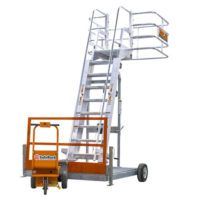
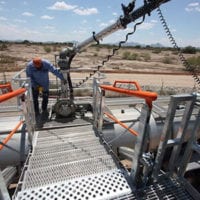
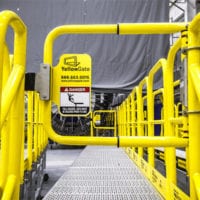
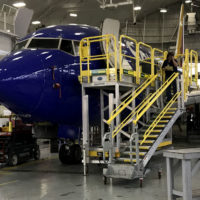
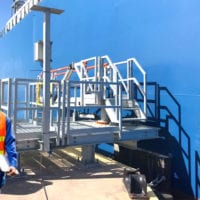

- Spill ContainmentMore …Loading Safety CagesMore …
SafeRack Worldwide
We pride ourselves on one-on-one customer service. When you call SafeRack, we'll be there to answer your questions with a combined experience of 400+ years.
Select your region below.- View Products
- Railcar & Truck Loading Platforms
- Gangways & Loading Ramps
- Stairs, Platforms & Ladders
- Mobile Ladders & Platforms
- Loading Arms & Fluid Transfer
- Safety Gates & Traffic Control
- Aviation & Aerospace Access
- Marine Access & Loading
- Grounding & Monitoring
- Spill Containment
- Loading Safety Cages
- Transloaders & Skids
- Shelters & Canopies
- Fall Protection
- Terminal & Speciality
Home / Industries / Bulk Chemical Loading / Sodium HypochloriteSodium Hypochlorite (NaCIO) Handling Design, Loading, and Installation.
Although no two Sodium Hypochlorite Loading solutions will be identical, the product itself determines much of the critical design criteria that will ensure that optimum safety and productivity can work together in harmony.
What is Sodium Hypochlorite? Sodium Hypochlorite, also referred to as bleach, is a strong liquid oxidizing agent with a greenish or yellowish hue, smells like chlorine, and is most frequently used as a disinfecting agent. Sodium Hypochlorite is a broad-spectrum disinfectant that is used to kill viruses, bacteria, fungi, and mycobacterium.
While bleach or sodium hypochlorite can be hazardous, when used properly, it can make the world a much healthier place. A short list of some of the common uses includes bleaching, disinfection, deodorizing, stain remover, and water treatment.
















Question, Get a Quote, Live Demo or Request an On-Site Visit
Our experts simplify the complex
View Full TextIn the United States, Sodium Hypochlorite is a “tight-fill” (closed-loop) loading operation and is loaded into rail cars via 3” PTFE lined chemical hoses.
Sodium Hypochlorite, if not handled properly can cause serious injuries and Personal Protective Equipment (PPE) is required. Additionally, because operators are on top of the vehicles during the loading process, fall prevention is essential, not only for safety but increases throughput.
Sodium Hypochlorite is typically shipped in DOT-105 non-insulated tank cars with safety valves that meet the DOT specification for the transportation of Sodium Hypochlorite and other like commodities. The rails cars themselves are ~ 9′ outside diameter with an overall length of ~45’ to 60′, with a 6’ x 6’ center opening or off-set opening crash box.
Your Project
Typically, as a starting point, we will need to know answers to these questions for your project
- The Railcar connection locations need flexibility – Do you know what the breadbasket connections look like?
- Are you using liquid and vapor arms/hose as two separate devices or a piggyback arm?
- Is the loading station indoors or outdoors?
- Is the loading area temperature controlled?
- How are you going to spot your railcars
Our highly trained technical sales team will undertake a detailed site survey prior to undertaking any work to check and clarify all dimensions, obstructions, access issues and other salient points. Our challenge is to provide the safest working environment – protecting operators and the equipment – while simultaneously enabling you to improve throughput and productivity.
Your Project Needs
Whether you are looking for a turn-key installation, on-site supervision or a maintenance program, SafeRack is positioned to assist you. We can do as little or as much as you need. Our project management and supervision team is the best in the business at supporting your company’s needs.
- Collaborative Design – Our loading platform specialists will work with you one on one, if you design to design the best loading solution for your specific needs
- Contract review – drawings and associated documents relating to the contract prior to site arrival
- Risk Assessment – Undertaking a site risk assessment
- Shipment Inspection – Detection of any shipping damage or abnormalities
- Material Receiving – Supervised off-loading and transport at site
- Installation Management – Supervised Installations and Coordination
- Start-up & Commissioning – On-site training for both users and maintenance personnel
Loading Arms
Generally speaking, SafeRack recommends rigid pipe loading arms where possible for the following reasons:
- Balanced throughout their movement envelope
- Designed not to hit the ground – protecting the asset and the operator
- Ergonomic – one man operation
- Fitted with manual or actuated valves.
- Fitted with optional purge/vent facilities
- Can be moved into position with ease and left hanging in the air while the operator prepares the tanker connection
- Parked neatly
Hoses require:
- Annual pressure test
- Are difficult to stow neatly when not in use
- Can be dropped
- Can be driven over
- Are very heavy to use if fitted with a valve at the tanker connection point
- Cannot be easily heated or have vent/purge valves fitted to it
- Prone to catastrophic failure
Typical Sodium Hypochlorite Loading Platform
Quote or discuss your installation.
Start by selecting loading application"*" indicates required fields
Below are some of the loading and unloading solutions for illustrative purposes only. Our experts will work with you and your team for a custom solution to suit your needs.
Sodium Hypochlorite Loading Arms

Sodium Hypochlorite is typically loaded into railcars or tank trucks via boom supported by-pass arms or PTFE lined chemical hoses with a flange connection. The arm or hose will have a top inlet with a control valve to ensure that it is self-draining after use and is supported along the length of a mechanical loading arm to improve handling; this is known as a by-pass arm. You can install one liquid and one vapor arm, or mount both the liquid and vapor hoses on one by-pass arm. For unloading, typically you would use a 3” chemical hose with flanged ends with EPDM, Kalrez, PTFE or Viton seals. Purge lines can be fitted to the arm, for nitrogen purging. Note: unloading hoses must be pressure tested annually to ensure their integrity, and this is a contributing factor to rigid loading arms being more viable over the longer term.
Sodium Hypochlorite Gangways and Safety Cages

A wider access gangway (48″-60″ is preferable) as it helps improve access and egress to and from the vessel. In addition, a wider gangway will reduce the risk of the operator’s PPE getting caught, torn or damaged, and will improve productivity and safety. Powered gangway solutions are also an option, with both hydraulic and pneumatic solutions being commonly used. Each gangway will be fitted with a two-rail safety cage for the railcar crash box. This will be a centered 6’x6’ safety cage to sit directly over the cashbox. This will provide a safe, secure work environment for your operator when connected to their breathing apparatus.

SafeRack’s GX SAS gangways use Retractalok power-assist technology allowing operators to raise or lower effortlessly, light as a feather to lift, and solid as a rock. Tested in the most critical applications, this revolutionary new gangway outperforms all others. Available in multiple lengths and widths.
Learn MoreMAXRack Elevating Safety Cage
 As an alternative to our two and four-rail safety cages, some customers prefer our MAXRack elevating safety cages. The ultimate fall prevention solution engineered to keep operators safe and productive. Designed for both trucks or railcars, and available in multiple cage lengths and widths. Safe, durable, and easy to use. MAXRack is built rock-solid with galvanized steel column supports and lifting arms (cages can be Aluminum, Galvanized, or Stainless Steel depending on application) Available in two power options – Pneumatic Air Drive and Electric Drive (Explosion and Non-Explosion Proof).
As an alternative to our two and four-rail safety cages, some customers prefer our MAXRack elevating safety cages. The ultimate fall prevention solution engineered to keep operators safe and productive. Designed for both trucks or railcars, and available in multiple cage lengths and widths. Safe, durable, and easy to use. MAXRack is built rock-solid with galvanized steel column supports and lifting arms (cages can be Aluminum, Galvanized, or Stainless Steel depending on application) Available in two power options – Pneumatic Air Drive and Electric Drive (Explosion and Non-Explosion Proof).
Learn MoreSodium Hypochlorite Eye Wash/Drench Showers

ANSI guidelines state that an Eye Wash/Drench Showers need to be located 10 seconds or 55’ (16.8m) from contaminants or hazardous materials. Eyewash stations need to be on the same horizontal plane with no obstructions.
Therefore, we would propose the installation of a standard combination Drench Shower/Eyewash Unit, which will save limited space and fit easily into any work environment.
Sodium Hypochlorite Spill Containment

Spill containment pans will be provided at the point of loading operations and is an essential piece of equipment in overall site safety and environmental protection. SafeRack recommends a minimum 20’ long galvanized, polyethylene or composite track pan to mitigate spills. Sodium Hypochlorite Grounding

Sodium Hypochlorite is not flammable, but it is a strong oxidizer, which enhances the combustion of other materials, Therefore, industry best practice includes the grounding of all vessels before starting the (un)loading process. - Vehicle grounding and bonding — ensure true grounding before product flow is permitted
- Explosion-proof enclosures — meet or exceed UL, CSA and Ex requirements
Sodium Hypochlorite Safety Gates

Safety Gates will be installed at the top of stairs and any other openings to ensure operator safety at all times.  YellowGate Safety Gates
YellowGate Safety GatesSafeRack’s line of industrial safety gates is the most flexible product on the market with the ability span openings between 16” and 36” and is field adjustable with nothing more than a wrench. Learn More
Sodium Hypochlorite Options

- Lighting – Lighting both over and under the platform will be provided. For overcast days or second shift, lighting is essential for improved safety and improved productivity.
- Platform & Canopies – Full platform canopies reduce exposure to the elements and improve the safe and productive loading operation from the operator’s perspective.
- Operator Shelter – Depending on your site requirements, consideration should be given to the requirement of an operator or guard building on the loading platform. This can be customized to meet specific site requirements
- Wheel Chocks – Railcar Wheel Chocks provide fast blocking of all types of railcars and meet OSHA regulations to safely prevent railroad cars from moving during loading or unloading operations. This is a requirement by the Department of Homeland Security
Personal Protective Equipment PPE Requirements
Eye/Face Protection: Wear chemical safety goggles. A face shield (with safety goggles) may also be necessary.
Skin Protection: Wear chemical protective clothing e.g. gloves, aprons, boots. Coveralls or long sleeve shirts and pants in some operations. Wear a chemical protective, full-body encapsulating suit, and self-contained breathing apparatus (SCBA). Suitable materials include: butyl rubber, neoprene rubber, Viton®, Viton®/butyl rubber, Barrier® – PE/PA/PE, Silver Shield® – PE/EVAL/PE, Trellchem® HPS, Trellchem® VPS, Saranex®™, Tychem® BR/LV, Tychem® Responder® CSM, Tychem® TK. The following materials should NOT be used: natural rubber, polyvinyl chloride. Recommendations are NOT valid for very thin neoprene rubber gloves (0.3 mm or less).
Respiratory Protection: Up to 5 ppm:
(APF = 10) Any chemical cartridge respirator with cartridge(s) providing protection against Benzene*; or Any supplied-air respirator*.
*Reported to cause eye irritation or damage; may require eye protection.
APF = Assigned Protection Factor
Recommendations apply only to National Institute for Occupational Safety and Health (NIOSH) approved respirators. Refer to the NIOSH pocket guide to chemical hazards for more information.
* For illustrative purposes only. Our experts will work with you and your team for a custom solution to suit your needs Customer Reviews
 5 5Delivered so fast, I wasn’t prepared.
5 5Delivered so fast, I wasn’t prepared.Easy to work with and very responsive to questions, helped me with budgeting issues. Delivered so fast, I had to scramble for equipment to unload. Availability, adjustable, looks were all factors in our choosing this product.
By Brad Kimble from CHS (Cenex) on 4/14/14 4 5The wrench was delivered in 1 week.
4 5The wrench was delivered in 1 week.The wrench was delivered in 1 week. We use the tool for tightening lags. Because of the height of the tool, it allows the user to be able to stand in more of an upright position as opposed to having to bend. This will help promote better posture and eliminate back strain.
By Rick Melsheimer from Union Pacific Railway on 2/19/12 5 5Extremely SatisfiedMr. Rose is the type of professional sales rep that you want to work with. He is quick to reply with any questions or needs. He’s very knowledgeable about the products that he can supply us with. He checks in regularly and is a pleasure to meet or chat on the phone with.By Tracy Weir from Blue Apron on 4/20/22
5 5Extremely SatisfiedMr. Rose is the type of professional sales rep that you want to work with. He is quick to reply with any questions or needs. He’s very knowledgeable about the products that he can supply us with. He checks in regularly and is a pleasure to meet or chat on the phone with.By Tracy Weir from Blue Apron on 4/20/22 5 5SafeRack was probably the most willing and happy to help with any issues or questions I had.
5 5SafeRack was probably the most willing and happy to help with any issues or questions I had.Fixing some ergonomic issues within our pipeline station, accessing certain valves and a few piping crossovers. The product has not been delivered yet but I assume it will arrive very soon.
By Lexi Wasan from Marathon Pipe Line LLC on 6/27/19 5 5SafeRack met our needs perfectly.
5 5SafeRack met our needs perfectly.I went to SafeRack based on past experience and knowing that you had the product I needed. Your quick response and delivery helped ensure that a safety issue at our facility was addressed promptly. SafeRack met our needs perfectly.
By Brian Waters from FujiFilm Hunt Chemicals U.S.A., Inc. on 2/19/14 5 5I was quoted the same day as requested.
5 5I was quoted the same day as requested.No negatives. All positive. I missed the cold call from the sales rep, Mark Gardner. I worked off his business card and catalog he left. We got the deal done over email. I was quoted the same day as requested, with price breaks for higher quantities as needed. I received my order real quick – within days. These are truly universal for our Distribution House needs, easy to install and adjust, eliminating the need for chains and hanging signs across stairways.
By Bill Robison from Under Armour on 9/13/16MAJOR SODIUM HYPOCHLORITE PRODUCERS WHERE WE HAVE SUCCESSFULLY EXECUTED SODIUM HYPOCHLORITE LOADING PROJECTS
SODIUM HYPOCHLORITE 101
Things to know about Sodium Hypochlorite
Sodium Hypochlorite is regulated by the U.S. Department of Transportation (DOT) and is classified as a corrosive liquid with the DOT identification number UN 1791.
Sodium Hypochlorite is typically bulk transported at 20% or 100% concentration and then diluted down for specific applications. Household bleach is formulated anywhere from 3 to 8 percent. While industrial-strength bleaches used in hospitals, public or private pools, and restaurants are formulated in the 10 to 12 percent range. Regardless of the concentration, serious damage can occur from prolonged exposure to sodium hypochlorite or by accidental contact with skin, eyes, or ingestion.
Do not breathe gas or vapors. Exposure to gases may cause burning of the eyes, nose, and throat; cough, as well as constriction to the airway and lungs, can occur. Use only in well ventilated areas with proper respiratory protection. Do not get liquid or vapor in eyes, skin, or clothing. Safety showers and eyewash stations should be immediately available.
Best practice loading/unloading includes wearing chemical-resistant clothing, gloves, splash goggles, and respirator at all times to protect eyes, lungs, and skin.
In the event of a leak or spill evacuate all personnel to a safe area. Remove all sources of ignition. Eliminate heat and ignition sources such as sparks, open flames, hot surfaces, and static discharge. Post “No Smoking” signs. In the event of a fire, use dry chemical, CO2, water spray, or foam as extinguishing agents.
Only properly trained and equipped personnel should be permitted to unload tank trucks or liquid railcar. Operators should wear an approved respiratory protective device, and impervious clothing, footwear, gloves, and goggles.
OSHA Permissible Exposure Limits (PEL) @ 1 ppm in an 8 hour day.
Sodium Hypochlorite may react violently with strong acids. Other incompatibilities include strong caustics, ammonia, urea, reducing agents, and oxidizable materials.
Never mix bleach with acidic toilet bowl cleaners or ammonia products because this can result in deadly toxic chloramine fumes and vapors.

Is your plant or facility compliant with ANSI, OSHA, and local safety codes? We can help!


EMERGENCY EYEWASHES / SHOWER EQUIPMENT AND THE ANSI/ISEA Z358.1 – 2014 STANDARD
Following eye contact, you must start washing with water immediately to prevent permanent damage. In the event of skin contact, you must start washing with water immediately to prevent slow-healing chemical burns.
Are you aware that ANSI guidelines state that Eye Wash/Drench Showers need to be located 10 seconds or 55′ from contaminates or hazardous materials and located on the same horizontal plane, with no obstructions? If bottom loading/unloading, an additional shower should be located at grade as well. SafeRack provides the above equipment plus much more needed to keep employees safe and expedite bulk chemical loading and unloading.
OSHA Regulation Experts – Does your existing chemical safety equipment or chemical loading systems meet OSHA’s latest requirements? SafeRack’s professional technical sales consultants are available to meet with your team to make recommendations to keep your facility in front of OSHA’s ever-changing country and region-specific standards and regulations, including lifeline and trolley beam fall arrest systems, metal stairs, and access platforms.
Why SafeRack?
The SafeRack approach is a collaborative one. Let’s call it The SafeRack Way. We have, over many years amassed a great deal of experience and understanding of the safety aspects involved in loading road tankers and railcars, as well as the behavioral habits of the operators.

Experts In Chemical Loading
- Acetic Acid
- Acetic Anhydride
- Acetonitrile
- Acrolein
- Acrylic Acid
- Acrylonitrile
- Aluminum Chloride
- Aluminum Sulfate
- Ammonia
- Ammonium Hydroxide
- Ammonium Nitrate
- Aniline
- Benzene
- Benzyl Chloride
- Bromotrifluoromethane
- Butadiene
- Carbon Dioxide
- Caustic
- Chlorine
- Chloroform
- Chlorosulfonic Acid
- DEF (Diesel Exhaust Fluid)
- Diethylene Glycol
- Dimethylformamide
- Dodecylbenzene Sulfonic Acid
- Ethanol
- Ethyl Acetate
- Ethyl Chloride
- Ethylene
- Ethylene Dichloride
- Ethylene Glycol
- Ethylene Oxide
- Ferric Chloride
- Ferrous Chloride
- Hexane
- Hydrochloric Acid
- Hydrofluoric Acid
- Hydrofluorosilicic Acid
- Hydrogen Cyanide
- Hydrogen Peroxide
- Hydrofluoric Acid
- Hypochlorous Acid
- Isopropyl Acetate
- Liquid Argon
- Liquid Nitrogen
- Liquid Oxygen
- Maleic Anhydride
- MDI
- Methanol
- Methyl Chloride
- Methyl Ethyl Ketone
- Methyl Methacrylate
- Methyl Isocyanate
- Molten Sulphur
- Nitric Acid
- Oleum
- Phenol
- Phosphoric Acid
- Phosphorus Oxychloride
- Phosphorus Trichloride
- Polypropylene
- Renewable Diesel
- Sodium Cyanide
- Sodium Hydroxide
- Sodium Hypochlorite
- Styrene Monomer
- Sulfuric Acid
- Sulfur Dioxide
- Titanium Tetrachloride
- Toluene
- Toluene Diisocyanate
- Turpenitne
- UAN (Urea Ammonium Nitrate)
- UREA
- Vinyl Acetate
- Vinyl Chloride
- Xylene
- Zinc Chloride
- Agro-Chemical
- Specialty Chemical
- Petrochemical

North America’s largest loading terminal
World-leading designer, manufacturer, and installer of truck and railcar loading platforms
As one of the primary railcar loading points, Hardisty is one of the major crude oil hubs in North America and a major origination point of pipelines that export to the United States. SCS was asked to supply and construct a SafeRack crude oil loadout terminal spanning nearly half a mile. The USD Hardisty terminal can load up to two 120-railcar unit trains per day and consists of a fixed loading rack with 62 railcar loading positions enclosed, separate control, operator, and mechanical buildings, as well as a unit train staging area and loop tracks capable of holding multiple unit trains simultaneously. SCS also supplied and installed boom-supported loading arms with supply and vapor management systems.

Quick Quote 866-761-7225
LET US DESIGN YOUR SOLUTION TODAY
Our innovative tools provide 3D visualizations and accurate quotes in minutes.
Get Help NowOrder Now 866-761-7225
Questions or Need a Quote?
Chat live with a knowledgeable and friendly safety expert now.

Bob Kashtan
Located in South Carolina

Joey Robinson
Located in South Carolina

Caelin Lacy
Located in South Carolina

Katie Kelly
Located in South Carolina

Amber Graham
Located in South Carolina













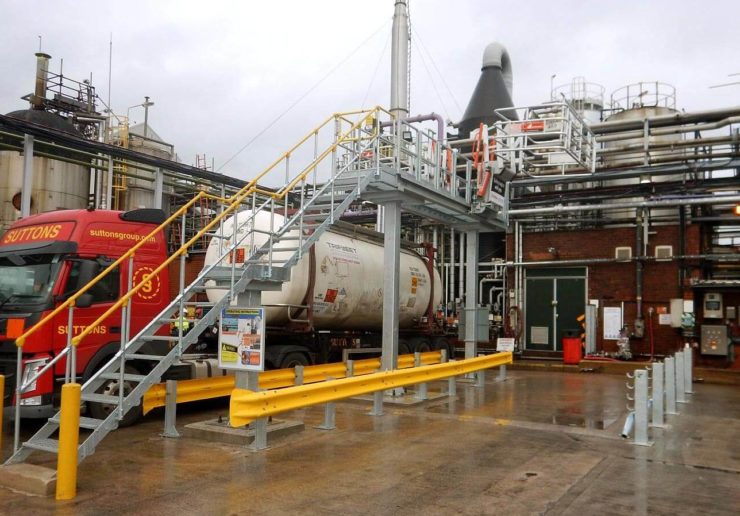
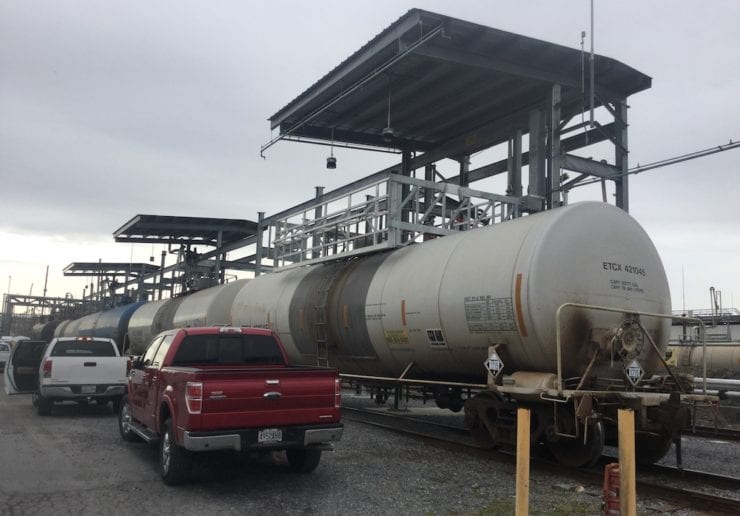
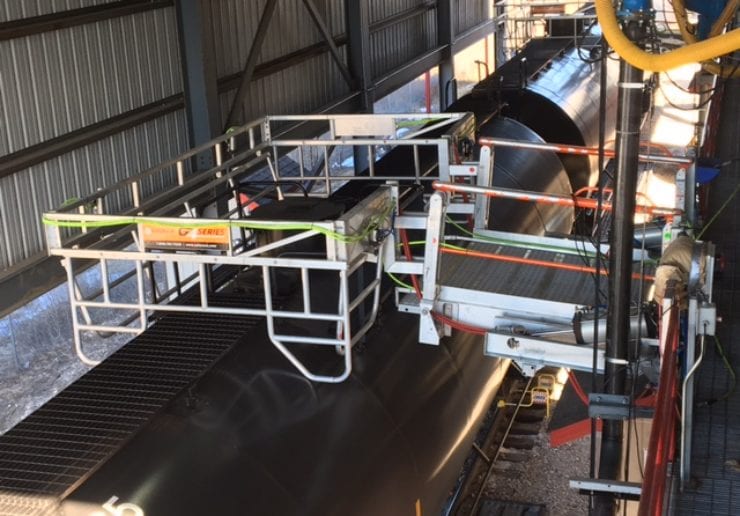
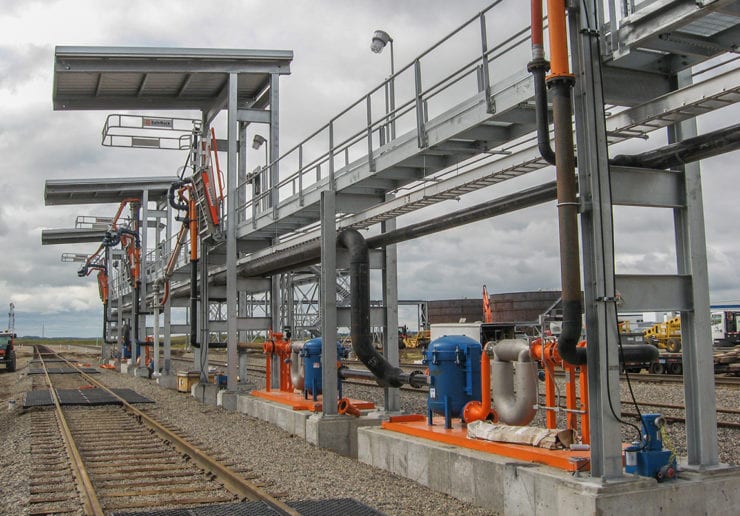
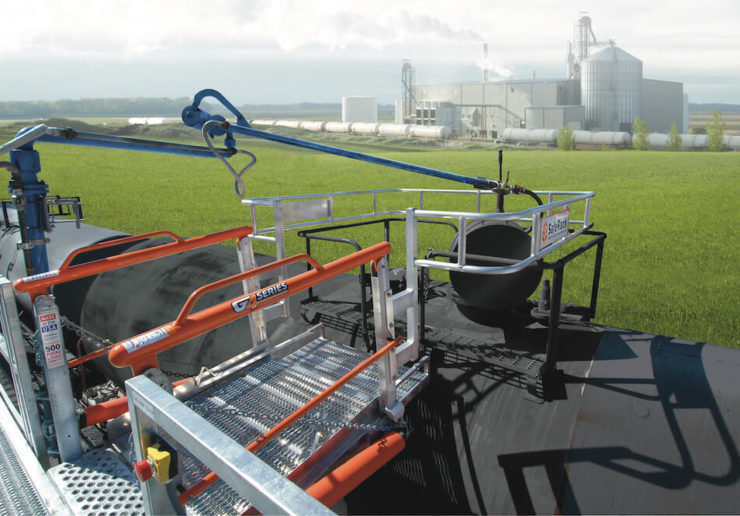
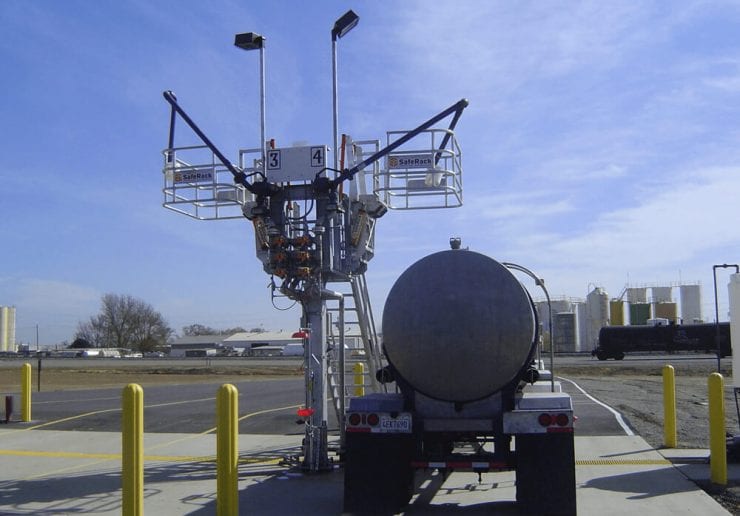
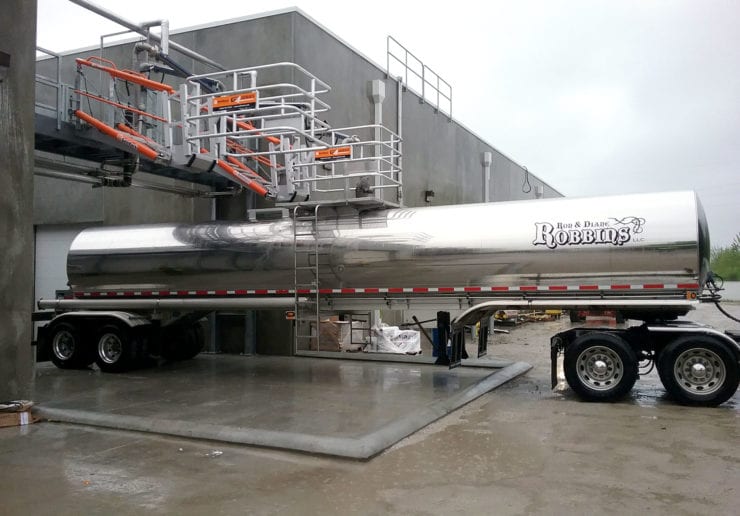
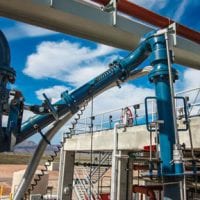
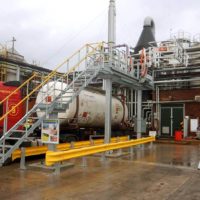
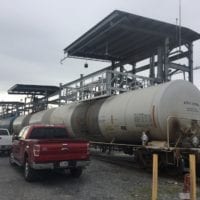
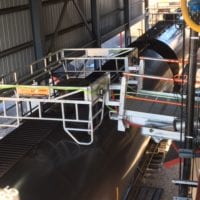
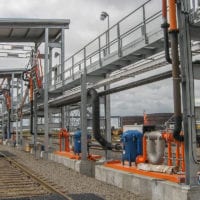
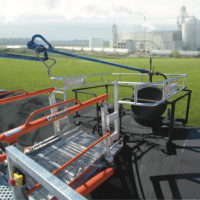
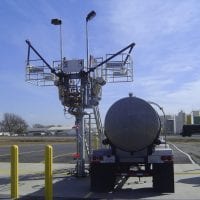
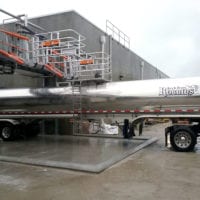

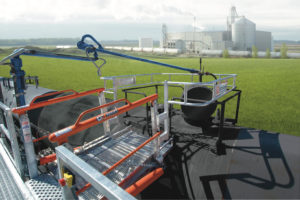
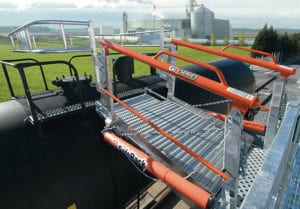
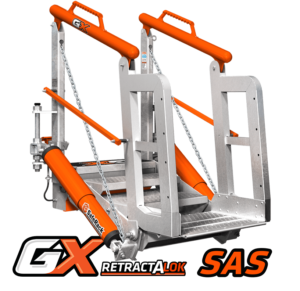
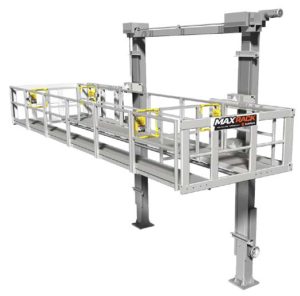 As an alternative to our two and four-rail safety cages, some customers prefer our MAXRack elevating safety cages. The ultimate fall prevention solution engineered to keep operators safe and productive. Designed for both trucks or railcars, and available in multiple cage lengths and widths. Safe, durable, and easy to use. MAXRack is built rock-solid with galvanized steel column supports and lifting arms (cages can be Aluminum, Galvanized, or Stainless Steel depending on application) Available in two power options – Pneumatic Air Drive and Electric Drive (Explosion and Non-Explosion Proof).
As an alternative to our two and four-rail safety cages, some customers prefer our MAXRack elevating safety cages. The ultimate fall prevention solution engineered to keep operators safe and productive. Designed for both trucks or railcars, and available in multiple cage lengths and widths. Safe, durable, and easy to use. MAXRack is built rock-solid with galvanized steel column supports and lifting arms (cages can be Aluminum, Galvanized, or Stainless Steel depending on application) Available in two power options – Pneumatic Air Drive and Electric Drive (Explosion and Non-Explosion Proof).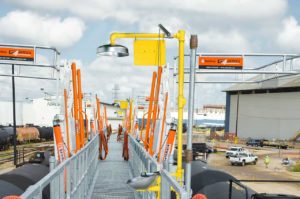

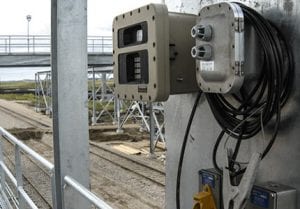
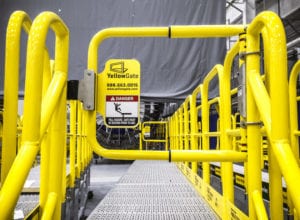
 YellowGate Safety Gates
YellowGate Safety Gates







